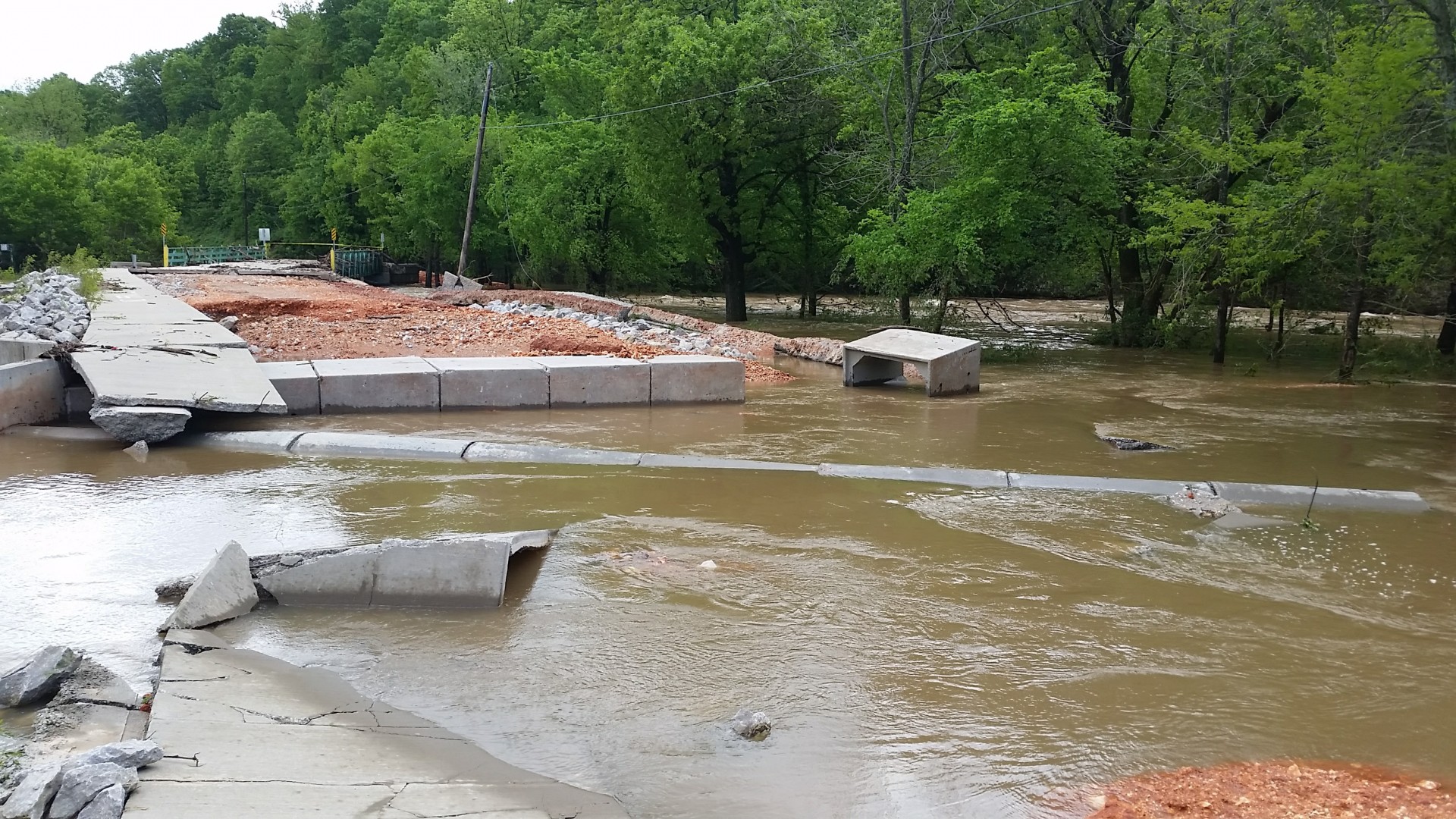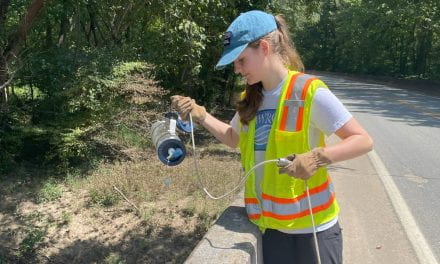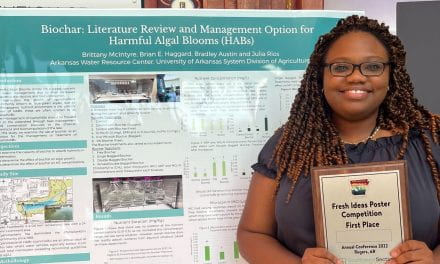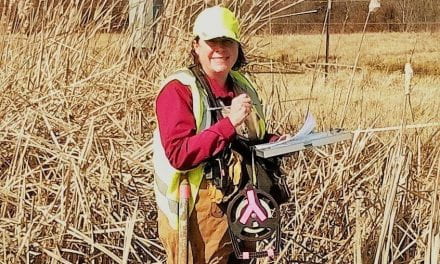
Buffalo River Watershed Management Plan Draft Presented to NWA
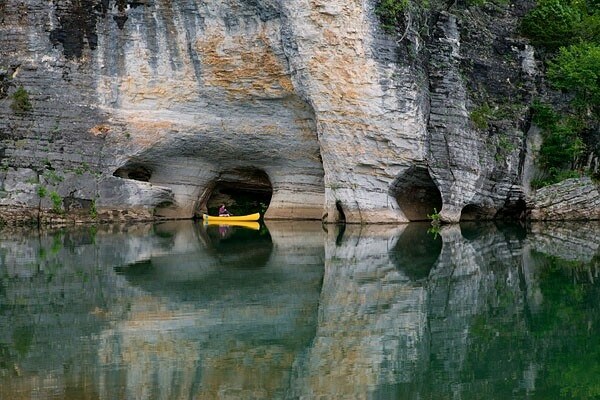
How can the Buffalo River Watershed be properly managed to maintain its water quality and scenic beauty as well as its economic prospects?
Allen Brown with the Arkansas Natural Resources Commission (ANRC) traveled to Rogers earlier this month to discuss the recently completed draft watershed management plan (WMP) for the Buffalo River. The plan focuses on non-point source pollution. Allen stressed that the WMP is non-regulatory and any suggested management activities are voluntary.
The Buffalo National River was established by Congress in 1972. Located in north-central Arkansas, the river spans 153 miles from west to east. According to the National Park Service, almost 1.8 million people visited the Buffalo National River in 2016, which drove over $90 million dollars into the local economy.
Who was Involved in the Plan?
In 2016, Governor Asa Hutchinson signed an executive memo that established the Beautiful Buffalo River Action Committee (BBRAC). The BBRAC originally included Arkansas Department of Environmental Quality, Arkansas Department of Health, Arkansas Agriculture Department, Arkansas Department of Parks and Tourism, and ANRC. The Committee was tasked with identifying and addressing potential water quality issues in the Buffalo River Watershed and developing a WMP. ANRC received funding to establish the plan and contracted with FTN Associates, an engineering and environmental consulting firm out of Little Rock, to develop the plan.
“Stakeholder engagement and building solid partnerships is the number one priority for drafting a successful plan,” Allen said at the February meeting. “The watershed supports a lot of activities like recreation and agriculture, so many different groups must come together to develop a plan that works for everyone.”
What does the Plan Say?
The purpose of the plan is to provide a framework for landowners, watershed groups, communities, and others to voluntarily implement best management practices and continue studying water quality in the watershed. Also, having an accepted WMP opens up opportunities to get funding from government or private sources.
The 622-page document has sections on general watershed information, the current and historical conditions for water quality and the environment, pollutants and sources of pollutants that are of concern, specific recommendations to address non-point source pollution, and an implementation plan.
Six sub-watersheds, which are smaller areas and tributaries that make up the larger Buffalo River Watershed, were identified in the plan as being priorities. Analysis of land-use data, geological information, and water-quality data pointed to Flatrock, Calf, Bear, Brush, Tomahawk, and Lower Big Creek sub-watersheds as priorities; the Big Creek identified here is not the same Big Creek that’s associated with C and H hog farm. The main pollutants of concern that were identified in the plan are nitrogen, phosphorus, sediments, and bacteria such as E. coli.
Failing septic systems and pasture land use were identified as the biggest contributors of non-point source pollution. Septic systems are used by individual residences as well as gas stations and campgrounds throughout the Buffalo River Watershed. Problems exist with septic systems because much of the area is classified as being of “very limited suitability” for septic systems due to the karst and porous terrain. Many septic systems were constructed decades ago and are potentially failing now.
Most of the pasture land is used for cattle and hay production, the two most common agricultural activities in the Buffalo River Watershed. Most of these operations are located in the valley areas, closest to streams and rivers, and many of the fields lack a riparian buffer. When the land is cleared all the way to the water’s edge, it’s easier for pollutants such as bacteria, sediments, and nutrients to move from the field into waterways.
What does the Plan Recommend?
Allen discussed several recommendations from the plan to address non-point sources of pollution. For example, failing septic systems should be identified and repaired or replaced. Pasture land owners could do things like exclude cattle from streams, prescribed cattle grazing, and plant or maintain an appropriate riparian buffer. These pasture-land management practices can help to filter nutrients and bacteria, mitigate flooding, and control erosion.
The plan also encourages scientific research throughout the watershed, including water-quality monitoring, nuisance algae, dissolved oxygen, microbial source tracking, and potential streambank restoration sites.
Implementing the recommendations comes with a multitude of challenges, costs being perhaps the biggest impediment to action. For example, it would cost over 3 million dollars to implement the pasture-land management activities listed above for only one of the six priority watersheds (Calf Creek).
What Happens Next?
Allen Brown says of the WMP, “After the EPA accepts the plan, there’s not one entity that owns it. Other groups will need to run with it and work towards implementation.” Brown stressed during the meeting that in order to improve water quality in the Buffalo River Watershed, landowners, watershed groups, and others will need to take action toward implementing the plan. ANRC says they will submit the plan to the EPA next month.
There are many potential resources available that can help landowners and organizations implement best management practices, including:
- ANRC 319 Nonpoint Source Pollution Program
- US Department of Agriculture (USDA) Natural Resources Conservation Service (NRCS) – Environmental Quality Incentives Program (EQIP)
- USDA-NRCS – Regional Conservation Partnership Program (RCPP)
- USDA-NRCS – Conservation Stewardship Program (CSP)
- USDA-NRCS – Healthy Forest Reserve Program (HFRP)
- USDA-NRCS – State Acres for Wildlife Management (SAFE)
- US Fish and Wildlife Service – Controlled Access Livestock Fencing (CALF)
- The Nature Conservancy
- US National Park Services
- Arkansas County Conservation Districts
- Arkansas Game and Fish Commission
- Arkansas Cooperative Extension Service
- Arkansas Grazing Land Coalition
The entire plan can be viewed here.
For questions, contact Allen Brown, Arkansas Natural Resources Commission, Allen.Brown@arkansas.gov or Terry Horton, FTN Associates, twh@ftn-assoc.com












